From the Field: Bill Buck in Cape Horn 2014, Part 2
Posted in Travelogue on February 28, 2014 by Bill Buck
William R. Buck, Ph.D., is the Mary Flagler Cary Curator of Botany at The New York Botanical Garden. For the last three years, Dr. Buck, a moss specialist, and a team of colleagues have journeyed to the Cape Horn region at the southern tip of South America, an area rich in moss species.
January 9, 2014; Seno Puga, Isla Grande de Tierra del Fuego, Chile (54°42’S, 70°46’W)
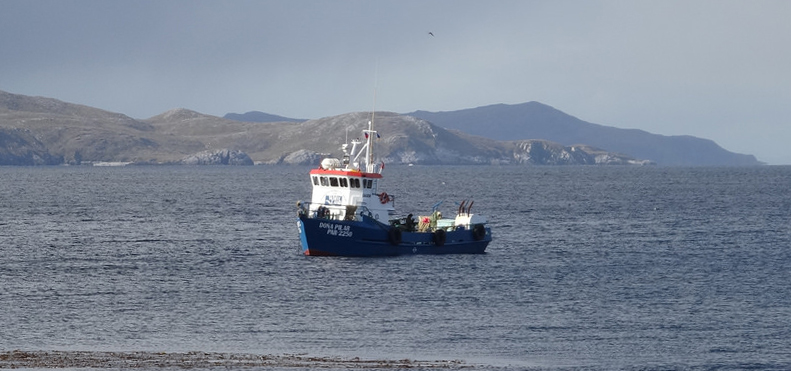
We were scheduled to leave Punta Arenas on January 7, but after waiting all day, we finally took our luggage to this year’s new ship at about 10:30 p.m. and weren’t underway until after midnight. The owner of the previous years’ ship had increased the price so much that we could no longer afford it. However, we were lucky to find a ship for the same price as last year, and we began settling into the Doña Pilar. We have a crew of four this year. Interestingly, the captain has the same name as our previous captain: Pato, short for Patricio. The new ship seems to have the same dimensions as our previous boat but with a different configuration. Unlike before, where we had a single large bunkroom, the Doña Pilar has four small bedrooms, each with a single bunk bed and a pair of small cupboards. The space under the bunks is open, allowing us to stow our luggage there rather than in the middle of the bunkroom floor. As with our last boat, there are two holds in the rear of the ship, one larger than the other. Previously, our specimen dryers were set up in the larger hold, but here we have installed them in the smaller hold because we’ve been told we’re heading to rougher seas this year. By filling the larger hold with water, the ship will be more stable. 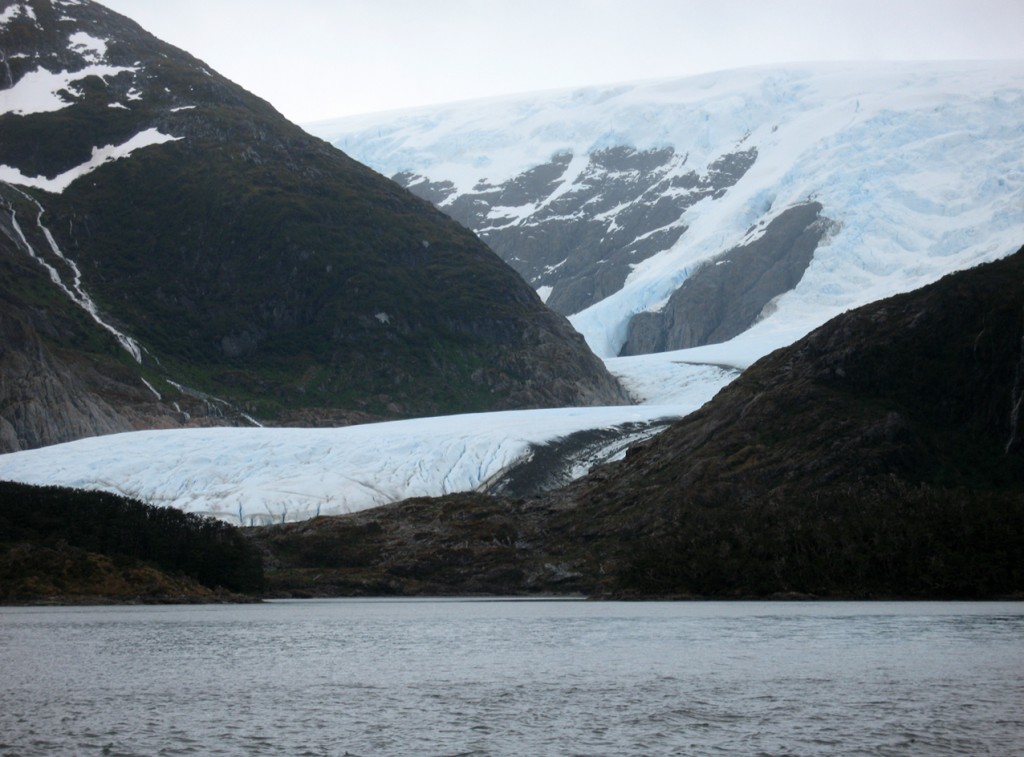 We were told to expect rough water at about 5 a.m., just as we cleared Cape Froward. However, a shift in the wind resulted in a calm passage. No one complained! We awoke the next morning to the spectacular scenery that characterizes these narrow passages through the Cape Horn Archipelago. Once again it was fun to watch the faces of those new to the region. It’s like the faces of children on Christmas morning. Our ship often navigates through narrower channels than those used by larger vessels. That also means more protected—and thus calmer—waters. The effect is magical. It appears as if we are headed straight for a dead end, but at the last moment a passage suddenly reveals itself and then seems to close just minutes after we pass through. Because of our late start, we didn’t reach our first scheduled collecting stop, the west end of Isla Stewart, until late afternoon. Juan realized, having mapped previous collecting sites, that the moss genus Eosphagnum was found at most sites west of Isla Stewart and completely absent from sites east of the island. We’re hoping to get a better understanding of the genus’ distribution by collecting at both ends of the island and in fjords cutting into Isla Grande de Tierra del Fuego just north-northeast of the island.
We were told to expect rough water at about 5 a.m., just as we cleared Cape Froward. However, a shift in the wind resulted in a calm passage. No one complained! We awoke the next morning to the spectacular scenery that characterizes these narrow passages through the Cape Horn Archipelago. Once again it was fun to watch the faces of those new to the region. It’s like the faces of children on Christmas morning. Our ship often navigates through narrower channels than those used by larger vessels. That also means more protected—and thus calmer—waters. The effect is magical. It appears as if we are headed straight for a dead end, but at the last moment a passage suddenly reveals itself and then seems to close just minutes after we pass through. Because of our late start, we didn’t reach our first scheduled collecting stop, the west end of Isla Stewart, until late afternoon. Juan realized, having mapped previous collecting sites, that the moss genus Eosphagnum was found at most sites west of Isla Stewart and completely absent from sites east of the island. We’re hoping to get a better understanding of the genus’ distribution by collecting at both ends of the island and in fjords cutting into Isla Grande de Tierra del Fuego just north-northeast of the island.
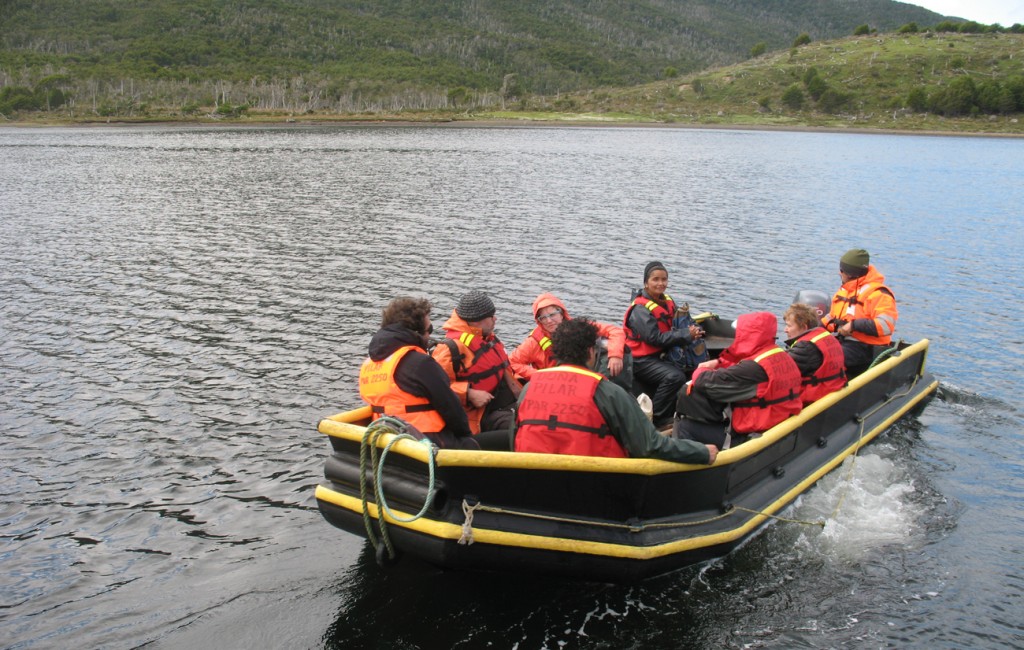
We arrived at the west end of Isla Stewart at about 5 p.m. and quickly got ready for the field, donning our rain gear. With dark not setting in until about 11 p.m. in this part of the world, we had plenty of time to prepare. The ship’s large Zodiac—a rigid inflatable boat—was lowered into the water, and we were underway at last. Even though we split into two groups, each went to forest habitats, and none of us found the Eosphagnum—the reason we were drawn to the island in the first place. The ship spent the night at the island since it was after 9 p.m. by the time we finished dinner. I was told the night before that we would leave at 5 a.m. and should arrive at our next site by around 8 a.m. Sure enough, the engine started at 5 a.m. on the dot, bringing us to Seno Puga close to 8 a.m.
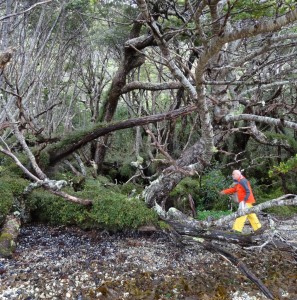
Although in all previous expeditions we have had fresh bread baked right on the ship, we have only had packaged white bread so far. We’re all hoping this will change, if only because we’ve gotten so used to the luxury in the past. After breakfast, we once again broke into two groups. Barb Andreas and I headed to a wet forest along a large waterfall, with Barb hoping to find Blindia, the genus of aquatic and wetland mosses that she studies. The rest of the group set off toward a Magellanic tundra, the term for a distinctive, nearly treeless habitat in the region around the Straits of Magellan. Almost right after being dropped on the beach, Barb found her first population of South American Blindia. She continued walking near the shore, working toward the mouth of the waterfall, while I picked my way through the forest to a Magellanic tundra that bordered the upper portions of the cascade. In a seepage area just steps from the falls, well within its splash zone, I first found fertile Rhacocarpus purpurascens. This is a common species on seepy slopes, but is very seldom fertile. As soon as I saw it, I started looking for Pararhacocarpus patagonicus, which often grows with the Rhacocarpus but is a genus found only in southern South America. Before moving on, I decided to check a few small tufts of a bryophyte that I expected to be an hepatic, or liverwort, which dominate these wet islands. However, as soon as I picked it up I saw that it was growing on a small pile of bones and figured that it probably wasn’t a liverwort. After a good squeeze to remove most of the water, the plants revealed themselves to be Tayloria dubyi, which most often grows in bird droppings. A good morning indeed! I worked my way back toward the beach, meeting Barb in the forest. We were scheduled for pick-up at 11 a.m., and while we could see the Doña Pilar from where we stood, our pick-up was nowhere to be found. Finally, a half-hour later, the Zodiac arrived. I hope this doesn’t become a pattern. After a morning in the field, we all welcomed a hot lunch and were surprised at the portions. Thus far, the cook has proven to be much better than any previous cook we’ve had. If he starts baking bread, I think we’ll have a keeper. Right after lunch we set off toward our next locale.
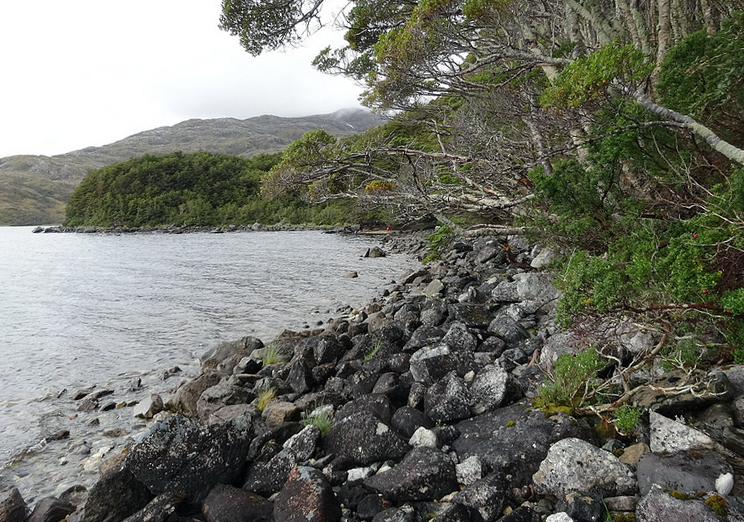
We were now immediately west of Seno Pugo at the northernmost reaches of Seno Alfredo. Again we broke into two groups. Laura, Rina and I chose to go to a forest at the base of a cliff, not far from our anchorage. After picking the coastal mosses, I began bushwhacking my way toward an exposed cliff face. It wasn’t far, but fighting the dense vegetation made for slow going. Still, it was worth it. I’ve found these dryish cliff faces, with the lower part somewhat dug into the cliff to create a natural shelter, to have a very different flora than the common, wet rock faces I otherwise encounter. Once again I was rewarded with a suite of species not seen elsewhere in the forest, including three species of Bryum and one Pohlia. But I soon realized that I needed to hurry back to the beach if I was going to make my 4 p.m. pick-up. I need not have hurried. Once again, the Zodiac was a half-hour late. As soon as I got back aboard the ship, Ernesto asked if I’d been waiting long. I simply looked at him for a few seconds in silence, and he said, “It won’t happen again.” If only we all had someone like Ernesto to solve life’s problems!
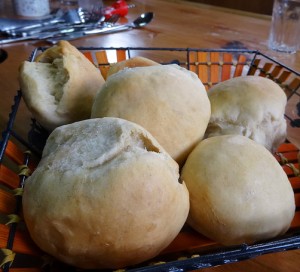
After showering, I passed through the galley on the way to my bunkroom, only to find—lo and behold—that the cook was busy baking fresh bread. Nothing could be more welcome. If you hadn’t guessed by now, I can’t think of a better, simpler food than freshly baked bread slathered in butter. It was all I could do to limit myself to a single roll. It wasn’t clear if we would spend the night here or move on to another site on the eastern beach of Isla Stewart. But due to the promise of rough waters between Isla Hoste and the Wollaston and Hermite groups of islands, it now appeared that the schedule is being completely rearranged. The plan now is to collect on eastern Hoste for a few extra days, then head back north through the Murray Channel and on to Puerto Williams by next Thursday. Afterward, we’ll go around the east side of Navarino Island to access the southern islands, using them as a wind and sea break. We hope it won’t be too rough. Stay tuned.
Past Expedition Entries: Cape Horn 2014, Part 1
All photos courtesy of Barbara Murray and Barbara Andreas

